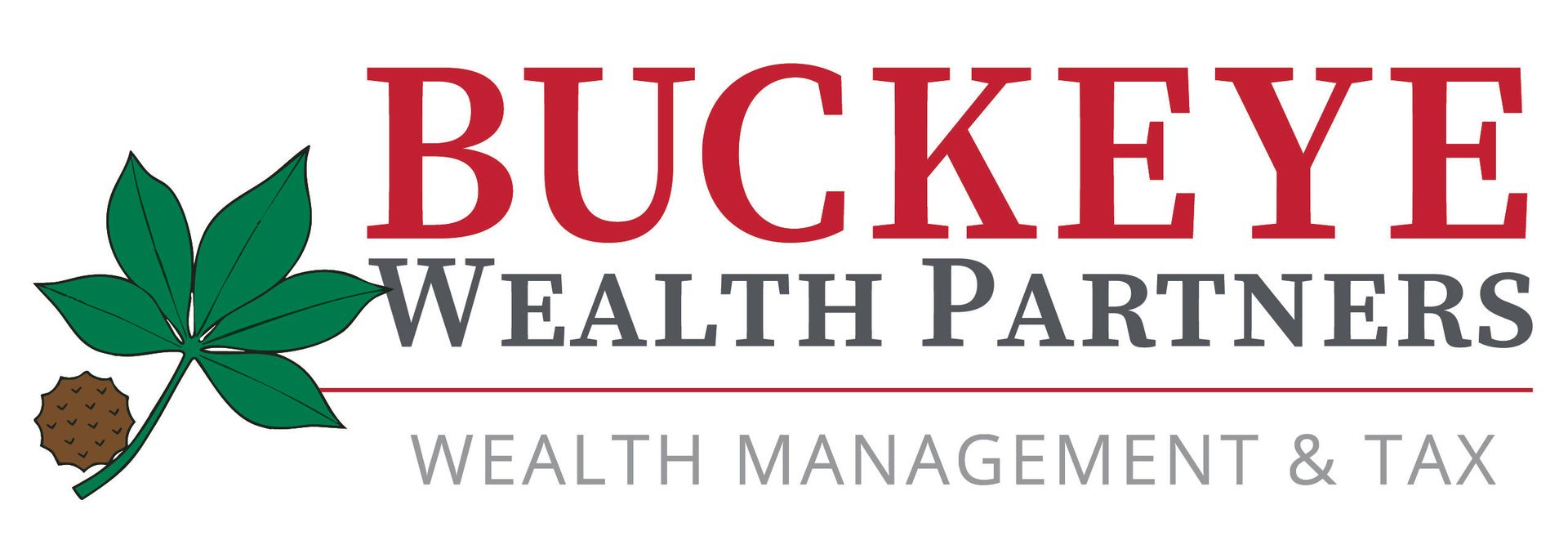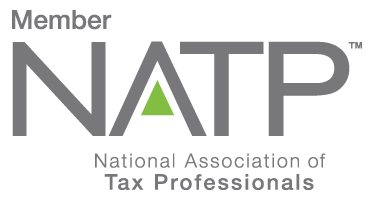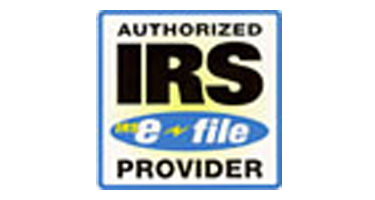The Ultimate Guide to Lifelong Tax Planning
Maximizing Wealth Throughout Your Working Career
Tax planning isn't just an annual task; it's a vital and strategic journey that connects with every phase of your working life. From that very first paycheck to the exciting brink of retirement, grasping and effectively using the tax code can truly transform your financial path. By making well-informed choices and applying thoughtful strategies at various stages, both individuals and businesses can discover significant savings, speed up wealth growth, and create a solid, secure financial future. This detailed guide is here to take you through the intricate world of tax planning, highlighting essential strategies to use from the start of your career to your peak earning years and beyond, all while showcasing the incredible potential for lifelong savings with the latest 2025 tax figures.
The Foundational Years: Building Blocks of Financial Strength (Ages 20s - Early 30s)
This initial phase is crucial for establishing a strong, tax-advantaged foundation. Even if your income is modest, the remarkable power of compounding returns in tax-free or tax-deferred accounts over many years is truly impressive. During this period, building good habits can lead to significant rewards in the future.
1. Maximizing Your Employer-Sponsored Retirement Plan (401(k), 403(b), etc.)
For many people, this is such an accessible and meaningful first step toward tax-advantaged investing! Your workplace retirement plan offers a great opportunity to save for your future while reducing your tax bill immediately.
- Strategy: Your main goal should be to contribute enough to qualify for the full employer match. This is essentially free money! Many companies match 50% or even 100% of your contribution, up to a certain percentage of your salary (for example, 50% of the first 6% of your salary). After securing that match, aim to contribute as much as you comfortably can, with the goal of hitting the IRS annual limit if possible. For 2025, the contribution limit for 401(k) and 403(b) plans is $23,000.
- Tax Benefits: When you contribute to a traditional 401(k) or 403(b), you do so with pre-tax dollars. This means the amount you contribute is deducted from your gross income before taxes, reducing your taxable income for the year! Additionally, the investments in your account can grow tax-deferred, so you won’t pay taxes on interest, dividends, or capital gains until you withdraw the money in retirement. This ongoing growth is a great way to build your wealth!
- Example Savings: Imagine this: you're 25 years old, earning $60,000, and you're in the 22% federal tax bracket for 2025. By contributing $10,000 to your traditional 401(k), your taxable income drops to $50,000. This simple move saves you an impressive $2,200 in federal income taxes for that year alone ($10,000 x 0.22). If you continue contributing $10,000 annually (and let’s say the limit increases over time, or you keep maxing it out with your growing income), and your investments grow at an average rate of 7% per year, that initial $10,000 could grow into over $150,000 (before taxes) by the time you're 65. When you include the powerful cumulative effect of those yearly tax deductions over 40 years, the total lifetime tax savings can reach hundreds of thousands of dollars!
2. Embracing the Roth IRA: Your Future Tax-Free Income Stream
Even with a modest income, a Roth IRA opens up a wonderful opportunity for completely tax-free growth and withdrawals during your retirement years!
- Strategy: Open a Roth IRA and make regular contributions, even if it's just $50 or $100 each month. The important part is staying consistent. In 2025, the Roth IRA contribution limit is $7,000. Be aware of income limits for direct Roth IRA contributions; if your income exceeds these limits, you might consider the "backdoor Roth IRA" strategy (contributing to a non-deductible traditional IRA and then converting it to a Roth, following the rules). If your employer offers a Roth 401(k), that also offers a Roth option.
- Tax Benefit: Contributions to a Roth IRA are made with after-tax dollars, meaning you don't receive an upfront tax deduction. However, this is a strategic trade-off. In return, all qualified withdrawals in retirement (after age 59½ and the account has been open for at least five years) are 100% tax-free. This is especially valuable if you expect to be in a higher tax bracket during retirement or if tax rates generally increase in the future. It provides significant certainty for future income.
- Example Savings: Imagine starting a Roth IRA at age 25, contributing the full $7,000 annually until age 65 (40 years). Assuming a consistent 7% annual return, your account could grow to over $1.4 million. Of this, approximately $280,000 would be your original contributions, and over $1.12 million would be pure investment growth. Because it's a Roth, all that $1.12 million in growth would be tax-free upon qualified withdrawal. If that growth were instead in a taxable account and subject to long-term capital gains tax (e.g., 15%), you would have paid approximately $168,000 in taxes. The Roth IRA allows you to keep every penny of that growth.
3. Leveraging the Health Savings Account (HSA): The Triple Tax Advantage
If you are enrolled in a high-deductible health plan (HDHP), an HSA is arguably the most powerful tax-advantaged account available, offering a unique "triple tax advantage."
- Strategy: Open an HSA and contribute the maximum allowed each year. For 2025, the individual HSA contribution limit is $4,300, and the family limit is $8,550. If your employer contributes to your HSA, that's an added bonus. Consider investing the funds within the HSA for long-term growth, rather than just using it for immediate medical expenses.
- Tax Benefit:
- Tax-Deductible Contributions: Contributions are tax-deductible (if made directly) or pre-tax (if made through payroll deductions), reducing your current taxable income.
- Tax-Free Growth: Investments within the HSA grow completely tax-free.
- Tax-Free Withdrawals: Qualified withdrawals for eligible medical expenses are also completely tax-free.
- Example Savings: If you're in the 22% tax bracket and contribute the individual maximum of $4,300 to an HSA for 10 years, you'd save $946 in federal taxes each year from the upfront deduction. Over 10 years, that's over $9,460 in federal tax savings. If those funds grow at 7% and are used for qualified medical expenses in the future, all that growth is also tax-free. For those who can afford to pay for current medical expenses out-of-pocket, saving HSA funds for retirement medical costs or even non-medical expenses (after age 65, treated like a traditional IRA) makes it an incredibly versatile retirement savings tool.
The Growth Years: Accelerating Wealth and Expanding Strategies (Ages 30s - 50s)
As your career progresses, income typically rises, and financial responsibilities like homeownership and family often emerge. This phase is about maximizing existing strategies, introducing new tax-efficient avenues, and diversifying your financial buckets.
1. Consistently Increasing Retirement Contributions
As your income grows, it's crucial to resist lifestyle creep and instead increase your contributions to tax-advantaged accounts.
- Strategy: Make it a habit to increase your retirement contributions by at least 1% of your salary each year, or whenever you receive a raise. Aim to reach the maximum limits for your 401(k), IRA, and HSA. If your company offers a Mega Backdoor Roth strategy (contributing after-tax dollars to a 401(k) and converting them to a Roth 401(k) or Roth IRA), explore this advanced technique for additional Roth savings.
- Tax Benefit: Continued tax deferral or tax-free growth, allowing your wealth to compound significantly, and further reducing your current taxable income. The more you contribute, the greater the immediate tax deduction (for traditional accounts) or the larger the pool of tax-free growth (for Roth accounts).
2. Leveraging Homeownership for Tax Deductions
Purchasing a home introduces several significant tax benefits that can reduce your taxable income.
- Strategy: Be diligent about tracking eligible home-related expenses. The primary deductions are mortgage interest and property taxes.
- Tax Benefit:
- Mortgage Interest Deduction: You can deduct the interest paid on up to $750,000 of mortgage debt ($375,000 for married filing separately). This deduction can be substantial, especially in the early years of a mortgage when interest payments make up a larger portion of your monthly payment.
- State and Local Tax (SALT) Deduction: Property taxes are part of the SALT deduction, which is currently capped at $10,000 per household (for single filers, married filing jointly, and heads of household). While this cap limits the full benefit for those in high-tax states, it still provides a valuable deduction.
- Points Paid: If you paid "points" (prepaid interest) to get your mortgage, these can often be deducted over the life of the loan or fully in the year paid, depending on the circumstances.
- Example Savings: Consider a homeowner in the 24% tax bracket for 2025. If they pay $18,000 in mortgage interest and $6,000 in property taxes annually:
- The mortgage interest deduction alone could save them $4,320 in federal taxes ($18,000 x 0.24).
- The property tax portion, limited by the $10,000 SALT cap (assuming other state income taxes bring the total to $10,000), could save an additional $2,400 ($10,000 x 0.24) in federal taxes. Cumulatively, these deductions can amount to tens of thousands of dollars in tax savings over the life of the mortgage.
3. Optimizing for Dependent-Related Credits and Deductions
Having children brings not only joy but also several valuable tax benefits that can significantly reduce your tax bill.
- Strategy: Familiarize yourself with credits and deductions available for families.
- Tax Benefit:
- Child Tax Credit: For 2025, this credit remains up to $2,000 per qualifying child (under age 17). It's a non-refundable credit, but a portion of it may be refundable as the Additional Child Tax Credit.
- Child and Dependent Care Credit: If you pay for childcare while you work or look for work, you may be eligible for this credit, which helps offset those expenses.
- Student Loan Interest Deduction: If you're paying back student loans (for yourself or your children), you can deduct up to $2,500 in student loan interest annually, even if you don't itemize.
- American Opportunity Tax Credit (AOTC) & Lifetime Learning Credit (LLC): For college-aged children, these education credits can provide substantial tax relief for tuition and related expenses.
- Example Savings: The Child Tax Credit alone can directly reduce your tax liability by $2,000 per qualifying child, potentially saving thousands of dollars annually for families with multiple children.
4. Strategic Education Savings with 529 Plans
For parents planning for their children's future education, a 529 plan is an exceptionally tax-efficient vehicle.
- Strategy: Contribute regularly to a 529 plan, even if it's modest. These plans are state-sponsored, and many states offer a state income tax deduction or credit for contributions, even if you don't itemize on your federal return.
- Tax Benefit: Funds invested within a 529 plan grow completely tax-free. Qualified withdrawals for eligible education expenses (tuition, fees, room and board, books, supplies, and even K-12 private school tuition up to $10,000 annually) are also 100% tax-free.
- Example Savings: If you contribute $10,000 annually to a 529 plan for 18 years, assuming a 6% average annual return, you could accumulate over $330,000 for college. The growth alone would be over $150,000. If this growth were in a taxable brokerage account and subject to capital gains tax (e.g., 15%), you'd pay over $22,500 in taxes. The 529 plan allows you to avoid all of this.
The Peak Earning Years: Optimization & Diversification (Ages 50s - Early 60s)
In your highest earning years, the focus shifts to maximizing contributions with "catch-up" provisions, strategically diversifying your tax exposure for retirement, and proactively preparing for future income needs. This is where long-term planning truly pays off.
1. Leveraging "Catch-Up" Contributions to Supercharge Savings
Once you reach age 50, the IRS allows you to contribute an extra amount to your retirement accounts, specifically designed to help you boost your savings before retirement.
- Strategy: Take full advantage of these additional contribution opportunities. For 2025, the "catch-up" limits are:
- 401(k)/403(b): $7,500 (bringing total to $23,000 + $7,500 = $30,500)
- IRA (Traditional or Roth): $1,000 (bringing total to $7,000 + $1,000 = $8,000)
- HSA: $1,000 (added to the individual or family limit)
- Tax Benefit: These catch-up contributions provide further tax-deferred or tax-free growth, and for traditional accounts, an even larger upfront tax deduction. This allows you to rapidly increase your retirement nest egg while simultaneously reducing your current taxable income.
- Example Savings: An individual aged 55, earning a high income and in the 32% federal tax bracket, could contribute the maximum $30,500 to their 401(k) and $8,000 to their IRA. This combined deduction of $38,500 would save them $12,320 in federal taxes in that single year ($38,500 x 0.32). Over 10-15 years of utilizing these catch-up provisions, the cumulative tax savings and accelerated growth could add hundreds of thousands of dollars to your retirement funds.
2. Diversifying Your Retirement Tax Buckets: Traditional vs. Roth
A sophisticated tax strategy involves balancing your retirement savings across different tax categories to gain flexibility in retirement. This is often referred to as managing your "tax diversification."
- Strategy: Aim to have a mix of:
- Tax-Deferred Accounts: Traditional 401(k)s, Traditional IRAs (where contributions are tax-deductible and growth is tax-deferred).
- Tax-Free Accounts: Roth IRAs, Roth 401(k)s (where contributions are after-tax, but qualified withdrawals are tax-free).
- Taxable Accounts: Standard brokerage accounts (where investments are taxed annually on dividends/interest and upon sale for capital gains).
- Tax Benefit: Having funds in all three "buckets" provides immense flexibility in retirement. In years where you need to keep your taxable income low (e.g., to reduce Medicare premiums, avoid the Social Security tax torpedo, or qualify for specific subsidies), you can draw more from your Roth accounts. In years where your income is otherwise low, you might draw from traditional accounts to fill up lower tax brackets. This allows you to strategically manage your taxable income throughout retirement.
- Considering Roth Conversions: If you anticipate being in a higher tax bracket in retirement than you are now, a Roth conversion can be a powerful move. You pay taxes on the converted amount in the current year, but then all future growth and qualified withdrawals from that money are tax-free.
- Example Savings: Let's say you have a $100,000 Traditional IRA and are currently in the 24% tax bracket. You convert $50,000 of it to a Roth IRA, paying $12,000 in taxes (50,000 x 0.24) in the current year. If that $50,000 then doubles to $100,000 over 10 years, and you withdraw it in retirement when you might otherwise be in the 32% tax bracket, you've avoided $32,000 in taxes ($100,000 x 0.32). The net savings from this strategic conversion is $20,000 ($32,000 avoided - $12,000 paid).
3. Strategic Tax-Loss Harvesting
This year-end strategy is a proactive way to reduce your current tax bill by offsetting investment gains.
- Strategy: Review your taxable investment portfolio for any positions that are currently trading at a loss. You can sell these losing investments to realize the loss. These realized losses can then be used to offset any capital gains you've realized during the year. If your capital losses exceed your capital gains, you can use up to $3,000 of the remaining loss to offset ordinary income (like your salary). Any excess losses can be carried forward to future years.
- Tax Benefit: Directly reduces your taxable income, either by eliminating capital gains tax or reducing your ordinary income.
- Example Savings: You realized $15,000 in capital gains from selling some winning stocks. You also have a stock that's down $10,000. By selling the losing stock, you can use that $10,000 loss to offset $10,000 of your gains, reducing your taxable gains to $5,000. If your long-term capital gains tax rate is 15%, you've just saved $1,500 in taxes ($10,000 x 0.15). If you had no capital gains but had a $5,000 loss, you could use $3,000 of that loss to reduce your ordinary income, saving, for instance, $720 in taxes if you're in the 24% bracket ($3,000 x 0.24).
4. Evaluating Permanent Life Insurance for Estate and Tax Planning
While primarily an insurance product, certain types of permanent life insurance can also offer tax-advantaged growth and estate planning benefits.
- Strategy: This is a more complex tool that requires careful consideration. Work with a qualified financial advisor to determine if products like whole life or universal life insurance fit into your overall estate, retirement, and tax plan.
- Tax Benefit: The cash value component of permanent life insurance typically grows on a tax-deferred basis. Furthermore, the death benefit paid to beneficiaries is generally income tax-free. For high-net-worth individuals, it can be a tool for estate liquidity and wealth transfer.
The Pre-Retirement Wind-Down: Strategic Positioning for Retirement (Ages 60s - Retirement)
As retirement looms closer, the focus shifts to fine-tuning your retirement income strategy, optimizing the withdrawal sequence from your various accounts, and managing future tax liabilities like Required Minimum Distributions (RMDs).
1. Optimizing Your Social Security Claiming Strategy
The age at which you claim Social Security benefits has significant tax implications, not just on the benefit amount but also on how much of it is taxable.
- Strategy: Understand the impact of claiming early (as early as age 62), at your Full Retirement Age (FRA, typically 66-67), or delaying until age 70. Each year you delay past your FRA, your benefit increases by about 8% (up to age 70).
- Tax Benefit: While Social Security benefits are generally taxable, the amount taxed depends on your "provisional income." By strategically managing other income sources (like drawing from Roth accounts in certain years), you can potentially keep your provisional income below thresholds that trigger higher taxation of your Social Security benefits (up to 85% can be taxable).
2. Planning for Required Minimum Distributions (RMDs)
Once you reach a certain age, the IRS mandates that you begin withdrawing money from your traditional pre-tax retirement accounts (like Traditional IRAs, 401(k)s, etc.). These are called Required Minimum Distributions (RMDs).
- Strategy: For 2025, RMDs generally begin at age 73 for most individuals. Understand when your RMDs will begin and how the withdrawals will add to your taxable income. If you're charitably inclined, consider Qualified Charitable Distributions (QCDs).
- Tax Benefit:
- Qualified Charitable Distributions (QCDs): If you are age 70½ or older, you can make a QCD directly from your IRA to an eligible charity. For 2025, the limit for QCDs is $105,000. These distributions count towards your RMD but are excluded from your taxable income. This is a powerful benefit, especially for those who don't itemize deductions but want to give to charity, as it reduces their Adjusted Gross Income (AGI).
- Managing RMDs: By having a diversified mix of pre-tax and Roth accounts, you can potentially reduce the amount of income subject to RMDs by converting some pre-tax funds to Roth accounts in earlier years (though this involves paying taxes on the conversion).
3. Strategic Gifting for Estate Planning
For those with substantial assets, strategic gifting can be a powerful tool for reducing the size of your taxable estate and supporting loved ones, all while minimizing tax implications.
- Strategy: Utilize the annual gift tax exclusion. For 2025, this exclusion is $19,000 per recipient. This means you can give up to $19,000 to as many individuals as you wish each year, tax-free, without reducing your lifetime gift and estate tax exemption. Spouses can "split" gifts, effectively allowing a couple to give $38,000 to each recipient annually.
- Tax Benefit: Gifts made within the annual exclusion do not count against your lifetime estate tax exemption (which is very high, but subject to change) and are not subject to gift tax. This allows you to gradually reduce your taxable estate over time, potentially saving significant estate taxes for your heirs.
The Cumulative Impact: A Lifetime of Transformative Savings
When you integrate these tax planning strategies across your entire working career, the cumulative impact is nothing short of transformative. The examples provided are just snapshots, but the continuous application of these principles can lead to savings of hundreds of thousands, potentially even millions, of dollars over your lifetime.
- Consistent 401(k) contributions and employer matching: Can add millions to your retirement account, with significant portions shielded from upfront taxes for decades.
- Roth IRA/401(k) tax-free growth: Provides a robust, predictable, and completely tax-free income stream in retirement, potentially saving hundreds of thousands, if not millions, in future income taxes, especially if tax rates climb.
- HSA savings: Can lead to tens of thousands in tax-free medical expense coverage throughout your life, or act as an additional, ultra-flexible, tax-advantaged retirement account.
- Mortgage interest and property tax deductions: Can cumulatively save tens of thousands of dollars in income taxes over the life of a loan.
- Strategic capital gains management and Roth conversions: Offer tactical ways to reduce current and future tax liabilities, optimizing your effective tax rate and preserving more of your investment growth.
- Education and Dependent-related credits: Provide direct dollar-for-dollar reductions in your tax bill, immediately increasing your disposable income.
By actively engaging in tax planning at every stage of your working career, you are not merely avoiding taxes; you are strategically building wealth, enhancing your financial security, and ultimately ensuring you enjoy more of the money you've diligently earned and saved. The tax code, while often perceived as complex and burdensome, contains numerous legitimate avenues to grow your net worth and achieve your financial aspirations. The key is to understand these avenues and consistently apply them.
We know the tax landscape can be a bit intricate and always changing. This article shares the latest 2025 figures and general strategies, but remember that everyone’s personal circumstances can be quite different. These insights reflect the regular conversations we enjoy having with our clients at Buckeye Wealth Partners. We're here to help you navigate these complexities, ensure compliance, and tailor strategies just for you. Together, we can unlock the full potential of lifelong tax planning!






